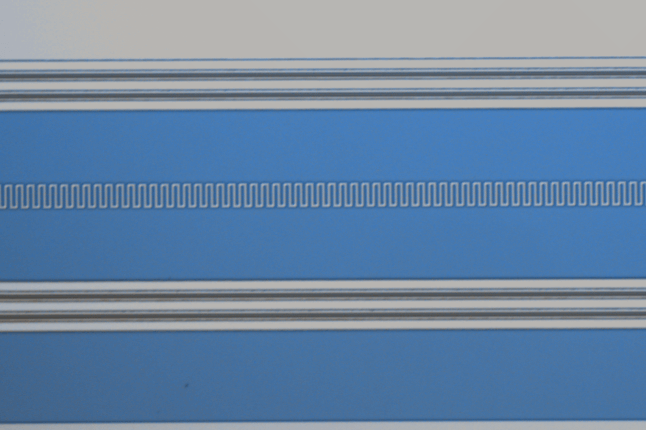News
Twisted moiré photonic crystals — an advanced type of optical metamaterial — have shown enormous potential in the race to engineer smaller, more capable and more powerful optical systems. How do they work?
Imagine you have two pieces of fabric with regular patterns, like stripes or checkers. When you lay the two pieces of fabric directly on top of each other, you can see each pattern clearly. But if you slightly shift one piece of fabric or twist it, new patterns that weren’t in either of the original fabrics emerge.
In twisted moiré photonic crystals, how the layers twist and overlap can change how the material interact with light. By changing the twist angle and the spacing between layers, these materials can be fine-tuned to control and manipulate different aspects of light simultaneously — meaning the multiple optical components typically needed to simultaneous measure light’s phase, polarization, and wavelength could be replaced with one device.
However, researchers have been unable to integrate twisted moiré photonic crystals into devices that can actively control the twist and distance between layers in real time, severely limiting their application.
Now, researchers from the Harvard John A. Paulson School of Engineering and Applied Sciences (SEAS), in collaboration with Stanford University and the University of California – Berkeley, have developed an on-chip twisted moiré photonic crystal sensor that uses MEMS technology to control the gap and angle between the crystal layers in real time. The sensor can detect and collect detailed polarization and wavelength information simultaneously.
The research is published in Nature Photonics and funded by the National Science Foundation, DARPA, the U.S. Air Force Office of Scientific Research and the U.S. Office of Naval Research. The sample fabrication was performed at Harvard University Center for Nanoscale Systems, which is a member of the National Nanotechnology Coordinated Infrastructure Network and is supported by the National Science Foundation.
“Twisted moiré photonic crystals are promising for engineering smaller, more powerful optical systems because they offer highly tunable optical properties, precise light control, compact and scalable design, and broad application potential across various advanced photonic technologies,” said Eric Mazur, the Balkanski Professor of Physics and Applied Physics at SEAS and senior author of the paper.
“Our research demonstrates how powerful these materials can be when we have precise control and establishes a scalable path towards creating comprehensive flat-optics devices suitable for versatile light manipulation and information processing tasks,” said Haoning Tang, a postdoctoral fellow at SEAS and first author of the study.
In the Harvard device, the layers of photonic crystals sit on vertical and rotary actuators, connected to an electrode. The whole device is only a few millimeters in scale and can be fabricated using CMOS-compatible processes, meaning it can be mass-fabricated using standard foundry nanofabrication processes.
The researchers demonstrated that by using the actuators to change the distance and rotational position of the layers of photonic crystals, they could perform simultaneous hyperspectral and hyperpolarimetric imaging — meaning every pixel captured by the sensor contained information from across the electromagnetic spectrum and detailed information about the polarization state. It is the first device with active tuning to demonstrate such detailed information about multiple properties of light.
“These devices could be used for a range of applications including quantum computing, data communications, satellites or medical scans, where getting a clear image and detailed information about light and color is really important,” said Tang.
In the future, these devices would be made with even more complex tuning capabilities, including actuators with even more degrees of freedom.
This research was co-authored by Beicheng Lou, Fan Du, Guangqi Gao, Mingjie Zhang, Xueqi Ni, Evelyn Hu, Amir Yacoby, Yuan Cao and Shanhui Fan.
Topics: Applied Physics
Cutting-edge science delivered direct to your inbox.
Join the Harvard SEAS mailing list.
Scientist Profiles
Eric Mazur
Balkanski Professor of Physics and Applied Physics
Press Contact
Leah Burrows | 617-496-1351 | lburrows@seas.harvard.edu



